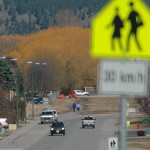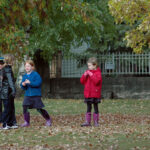Home »

AG finds B.C. government not doing enough to protect biodiversity
According to Auditor General John Doyle’s latest report, titled An Audit of Biodiversity in B.C.: Assessing the Effectiveness of Key Tools, biodiversity in B.C. is declining and government is not doing enough to address this loss.
“Biodiversity is critical to the health and well-being of British Columbians. Therefore we expected government to be ensuring that its actions are effective,” said Doyle. “We found that government doesn’t know if its actions are conserving biodiversity. There are several barriers to government being effective, including a lack of information, gaps in legislation and poorly implemented policies and tools.”
Doyle’s report reveals that despite the B.C. government’s decades-long objective to conserve biodiversity, and commitments made on the national and international stage, government is not fully implementing or monitoring its habitat-protection tools.
“Habitat preservation is critical to the conservation of biodiversity and government’s lack of implementation and monitoring is troubling,” said Doyle. “My Office reviewed the government’s habitat conservation efforts 20 years ago and many of the issues identified in that report were also identified in this audit.”
The United Nations declared 2011-20 the Decade on Biodiversity. Doyle’s report states that B.C. has an opportunity to be an international leader and bolster its reputation on the world stage by ensuring that, by 2020, it has reversed the current decline in the province’s biodiversity. However, to reach this target will require specific, strategic actions by government. This report makes six recommendations on how the provincial government can work towards this.
News of the AG’s criticism didn’t come as a shock to regional environmentalists.
“Unfortunately, the Auditor General’s Report confirms what most people engaged in the protection of biodiversity are well aware of: B.C. is falling far short of its responsibility and commitments to maintain biodiversity,” stated Wildsight’s John Bergenske.
“The East Kootenay has been recognized internationally as one of the very best opportunities globally to address the needs of species adaptation to climate change, yet government’s focus remains on resource extraction. There is an urgent need to better understand and implement clearly articulated management guidelines across the landscape. This calls for land use planning that addresses biodiversity as a priority. The Auditor General has stated that the present emphasis on resource extraction must change if we are to maintain the health of British Columbia’s ecosystems. Biodiversity protection measures that are consistently limited by perceived impacts on development have resulted in measures that are little more than rearranged deck chairs on a sinking ship,” Bergenske said.
About the Office of the Auditor General of B.C.:
The Auditor General is a non-partisan, independent Officer of the Legislature who reports directly to the Legislative Assembly. The Auditor General Act empowers the Auditor General and his staff (known as the Office of the Auditor General or the OAG) to conduct audits, report findings and make recommendations.
The B.C. government stated in a press release that it “accepts the recommendations contained” in the Auditor General’s report.
“The recommendations highlight many of the issues all jurisdictions are challenged with when managing to conserve biodiversity, and, as indicated in government’s formal response to the audit, B.C. is committed to improving its management on a number of fronts,” the government release says.
“The B.C. government recognized that effectively managing to conserve biodiversity in the 21st century required a fundamental shift to how natural resources are managed in this province. Government is in the process of implementing a shift from a ministry-by-ministry approach to a coordinated, natural resource sector approach that will incorporate biodiversity objectives – along with other social, economic and environmental objectives – into all natural resource decisions.”
Above image: Upper Jumbo Creek Valley – at the old sawmill site, which would be roughly the centre of the proposed resort village.
Ian Cobb/e-KNOW







